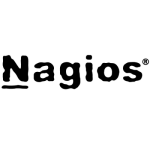What is our primary use case?
We install and configure UIM to replace other products like OmniVision, InfoVista, and open source products like Nagios and Cacti with a standardized product, with the new capabilities for the market, like virtualization technology, topology, analysis. It's too difficult for non-technical users, non-software developers, to develop their own monitoring tools.
What is most valuable?
Scalability and flexibility. The product can grow with your infrastructure so you don't have to install other products. Just add components. It's very simple.
The second major feature is the user-friendly interface. It's the best feature for our customers, because we are the implementers of the software. It's easy for us to install and configure the product, but our customers want a simple interface with only the options they need to run and monitor their environment.
Recently, important features introduced were the Discovery capability, Auto-Deploy profile manager, and alarms.
Another feature is reporting. We discovered new ways to generate new reports.
What needs improvement?
This is a very complex question, because it depends on the customer's needs. Some customers need more network capabilities, but UIM is all about IT monitoring. It's an all-inclusive software.
It's difficult to become the best in monitoring all of the parameters in technology. Some customers want extended capability in the network, or the system overall. But it's difficult to ask the vendor to integrate all of capabilities in one product. We prefer to capitalize on the synergy of products, and not to add features, and features.
Three or four years in the future, there will be a product with a lot of capabilities, but if one of our customers wants a simple product, not expensive, we can't provide them a product with thousands of capabilities when he will only use ten.
We prefer to follow the market standards, and use a product with a simple and user-friendly interface. That's what we want.
The major problem we have when we sell CA UIM is that we need to sell additional products because it doesn't cover cover all the features. The problem comes down to price. That's the major problem for us. When you have to sell many products, the customer will say, "Oh, it's too expensive," and he won't purchase all the products. So, we think when you have to sell many, many products, they have to do better on pricing.
We would also like to see automatic network topology.
What do I think about the stability of the solution?
With the new release, the new version, it is more stable. The last releases were less stable than the new one. We think version 8.3 wasn't that stable. But with the 8.5.2, it's alright. It's really stable now.
We make ourselves available on call to our clients and it's now maybe one or two nights per month that there is downtime.
What do I think about the scalability of the solution?
The scalability of the product has not evolved because it has been very good from the start. It's a very important point. CA UIM has a history of a lot of customers with successful ventures, so scalability is important for its customers.
When a customer starts with a new product, they want to know it has scalability. They won't use all of the capabilities but scalability has to be there.
Even ten years ago, if a large bank or transport or trading company used UIM, they knew the product was scalable, flexible.
Scalability is good.
How are customer service and technical support?
I had to call them one time at 4am, and I think they saved my life, because they called me back about five minutes after I opened the case. It was a high-impact incident, and they resolved it after about 10 or 15 minutes. So I'm really happy with the technical support. They are nice guys and technically good.
Which solution did I use previously and why did I switch?
We are partners for CA but we also partner with other providers, like small French providers for the local market, not the worldwide market. we can use UIM for the best monitoring and use features from other products as well. CA lets partners work with other products. We are honest about the futures of the CA products. Most of the time, it is stronger than the other products.
How was the initial setup?
We have implemented it for three or four customers in the last two years, a bank, an insurance company, among other smaller companies only known in France.
For us, the implementation is really easy.
What other advice do I have?
With version 9 of CA UIM arriving soon, we think we will rate it even better, at nine out of 10. With the current version of the product it's a seven. CA UIM has a long history, but as a result, it's difficult for CA to follow market standards. The new version will arrive on the market with beautiful capabilities and very nice interfaces. The new version will enable CA to catch up to market standards. It's a great choice.
Be sure to correctly plan what you need, it's very important. In a lot of cases, the customer asks for a monitoring product with some needs. When we arrive for the workshop, we discover they have other needs. It's important for the customers to not only ask partners to make a proposal, but they should go to the market, got to the forums and community, and see what exists on the market. Ask partners detailed questions. Not, "I need system monitoring," but why. What more do you need? That's important.
Secondly, don't forget that proprietary products like CA have a price. This price is justified by the capabilities. Don't compare open source products with a proprietary product. It's not the same. We look very expensive because they compare us with Aegis or Centurion, but it's not the same product. It's not the same team. It's not the same methodology of work or technical support.
Disclosure: My company has a business relationship with this vendor other than being a customer. Partner.














